#Common ragwort
Text

Common Ragwort - Erva-de-são-tiago (Senecio jacobaea)
Serra da Arrábida/Portugal (12/03/2024)
[Nikon D850; AF 105mm Micro-Nikkor F2,8 with Circular Flash Nissin MF 18; 1/250s; F29; 400 ISO]
3 notes
·
View notes
Text
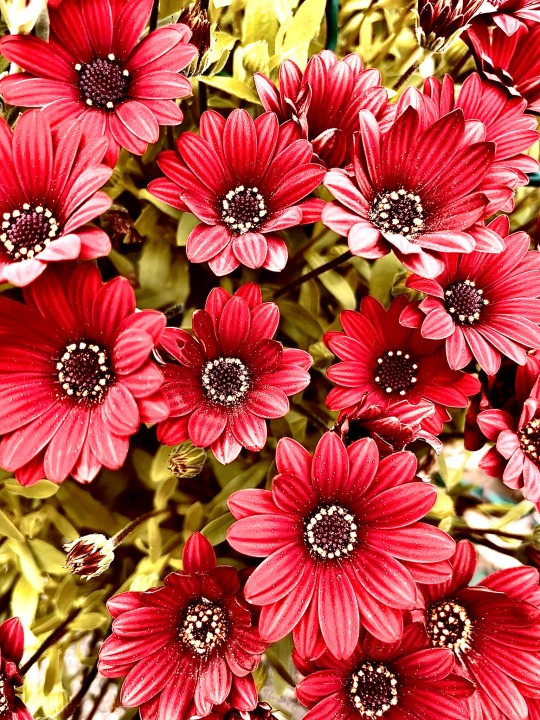
The most common ragwort I have ever seen. Aesthetic flowers be like 🫦
I hope this ends up on the peoples dash who need something to believe in
Believe in these flowers
U are just as good, if not better than the common ragwort, u sexy sandwich
💋
12 notes
·
View notes
Text



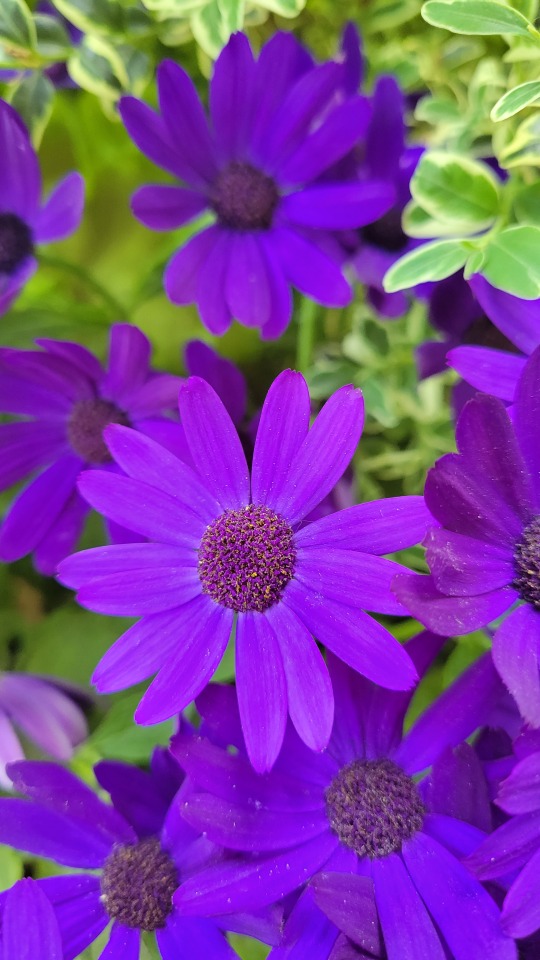
#flowers#senecio#pericallis x hybrida#butchart gardens#gardens#purple flowers#ace flowers#british columbia#canada#cineraria#common ragwort#my photos#my post
4 notes
·
View notes
Text

12 notes
·
View notes
Text
Common Ragwort #plant
Senecio jacobaea.
Picture taken July 24.
#wildflowers #plants #nature #naturephotography #woods #wildflower
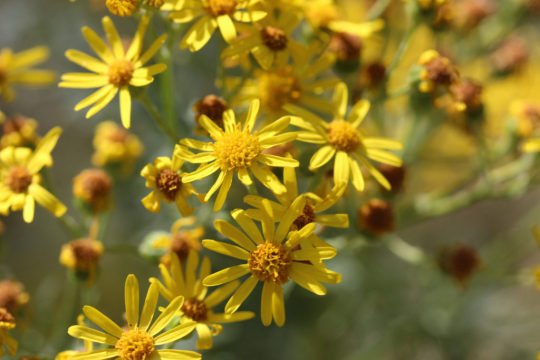
View On WordPress
2 notes
·
View notes
Text

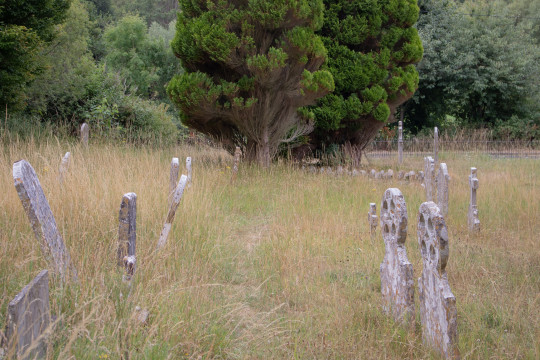



Frampton, Dorset (2) (3) (4) (5) by Stoutcob
1 note
·
View note
Photo


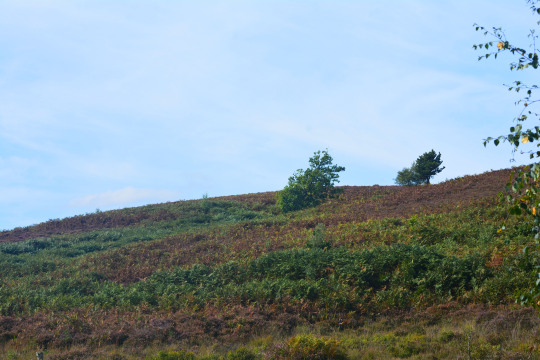




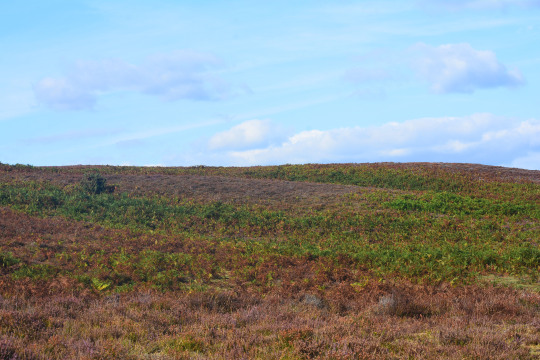

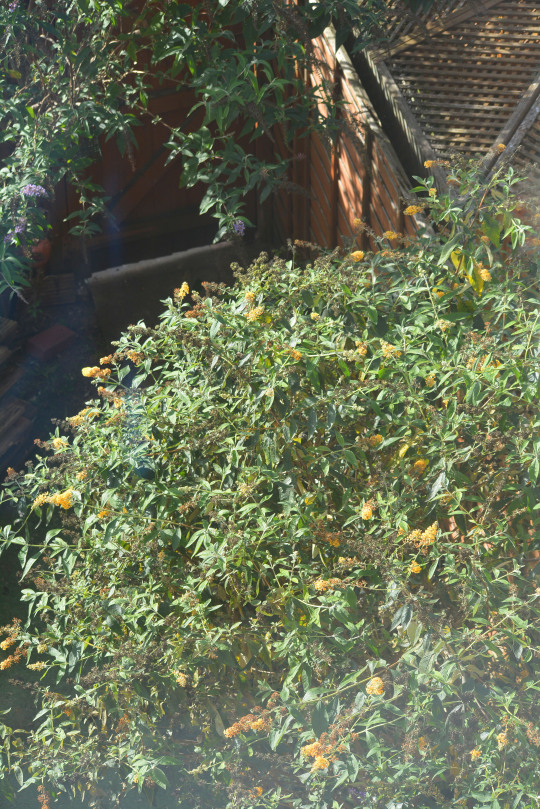
18th September 2022: Post 2 of 2-Ibsley Common in the New Forest
Following on from my previous post, we then walked at Ibsley Common in the New Forest this afternoon where it was nice to have another really peaceful walk, taking in the beautiful scenes of bits of purple heather and lush green in trees in this moor like undulating landscape with a nice wood and stream taken in too. There was great sunshine for a lot of the walk. I took the first five and seventh and eighth pictures in this photoset of views on the walk and the sixth of some bracken lit nicely by the sun I was actually aiming to take a photo of the Stonechat sat in it I kept two versions in the end one cropped of the Stonechat which I tweeted on Dans_Pictures tonight and the view as I thought it looked nice.
There were some great birds seen on the walk; one of my favourites the Dartford Warbler briefly, Stonechat well, Meadow Pipit, lots of Swallows moving through once more, Mistle Thrush and Woodpigeon with a Blue Tit heard I believe. What I believe was a Southern Hawker dragonfly flying at the end, a beautiful iridescent beetle either Dor beetle or Splendid Earth Boring beetle if the former seen nicely again after some last Sunday at Pig Bush and three weeks ago at Martin Down and New Forest ponies again were other nice sightings here this afternoon. As we enjoyed an ice cream by Rockford on the way back, one of a few great relaxing time off things to do we have enjoyed doing between everything else this week, there were some gorgeous coloured ponies kissed by the afternoon sun. In the car there was an interesting looking insect or it may have been a spider on the window beside me.
The Ibsley Common walk was a good one for flowers with ragwort, more devil’s-bit scabious after last Sunday, more lovely freshly flowering yellow gorse a little theme this week, hawksbeard, daisy I seem to recall, the purple heather and some smashing harebells seen well looking especially lovely in the sun flowers I do admire.
I took the final two pictures in this photoset of a nice sky scene and yellow buddleia in the back garden when home this evening, there was more nice red at sunset this evening which I enjoyed out the back. It is a bank holiday tomorrow but it felt most appropriate to reflect this evening how today brought to an end a quickly passing but wonderful patch of leave for us. It was packed full of adventure, lots of bird, mammal, butterfly, dragonfly and flower sightings and others making it a key week of my wildlife and photography year and putting me in strong positions for a few of my year lists this year, so many photo opportunities in mostly fantastic weather at a perfect mix of familiar and new places for us, local and further afield. Along the way meeting some wonderful people, some of which we had met before and some we saw more than once at different places, allowing for much social interaction. And it was so relaxing. Thanks for all your support for my photos and posts this week. It will be a hard and historic day tomorrow for the UK with the funeral of Her Majesty Queen Elizabeth II. I hope you all have a good and safe new week.
Part 1 of today’s posts about the boat trip around Poole Harbour we went on is here: https://dansnaturepictures.tumblr.com/post/695761688752996352/18th-september-2022-post-1-of-2-boat-trip-with
#photography#ibsley common#ibsley#rockford#new forest#england#uk#hampshire#heather#gorse#devil's-bit scabious#ragwort#bracken#harebell#photos#birdwatching#walk#peaceful#tranquility#heathland#landscape#world#nature#europe#reflections#2022#september#sunday#week off#stonechat
2 notes
·
View notes
Text

groundsel/old-man-in-the-spring is new.for me but it's absolutely beautiful and super cool!
Saturday April 20th 2024 11:57am
#2024#april#nature#flower#groundsel#old man in the spring#plant#ragwort#daisy family#common groundsel
1 note
·
View note
Video
n394_w1150 by Biodiversity Heritage Library
Via Flickr:
Icones florae Germanicae et Helveticae, simul Pedemontanae, Tirolensis, Istriacae, Dalmaticae, Austriacae, Hungaricae, Transylvanicae, Moravicae, Borussicae, Holsaticae, Belgicae, Hollandicae, ergo Mediae Europae. Lipsiae,F. Hofmeister [etc.]1834-1912. [v. 1, 1850] biodiversitylibrary.org/page/6035936
#Europe#Plants#New York Botanical Garden#LuEsther T. Mertz Library#dc:identifier=https://biodiversitylibrary.org/page/6035936#Achillea pectinata#Artemisia Abrotanum#Artemisia pontica#Artemisia dracunculus#Senecio gallicus#Senecio sylvaticus#Senecio viscosus#sticky ragwort#sticky groundsel#Tarragon#estragon#roman wormwood#small absinthe#woodland ragwort#heath groundsel#mountain common groundsel#noble yarrow#Southernwood#lad's love#southern wormwood#wormwood#groundsel#ragwort#botanical illustration#scientific illustration
0 notes
Text
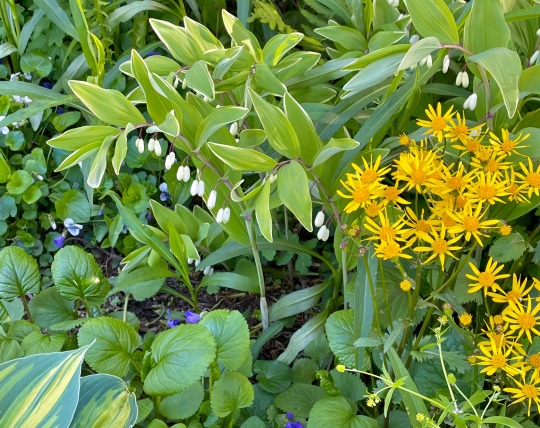
More garden detail featuring variegated Solomon seal, golden ragwort, common violets, kidney leaf buttercup, and a tiny bit of hosta ‘June’.
237 notes
·
View notes
Text
Moth of the Week
Antler Moth
Cerapteryx graminis
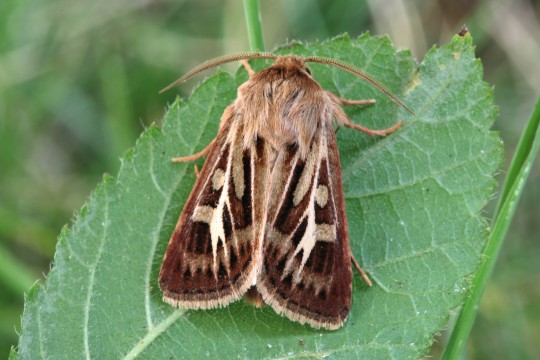
The antler moth is a part of the family Noctuidae. It was first described in 1758 by Carl Linnaeus. This moth gets its name from the antler shaped mark in its forewings.
Description This moth species has brown forewings, with a “basal streak” of white that branches out. This mark may vary in size per moth. The forewings show a mirrored pattern of the base brown broken up by the branches and a few spots and lines of lighter brown. The forewing also may or may not have black streaks. The hindwing is dark brown with a white fringe.
Males are smaller than females with fluffier antennae.
Male Wingspan: 27 - 32mm (≈1.06 - 1.26in)
Female Wingspan: 35 - 39mm (≈1.38 - 1.53in)
Diet and Habitat The larva of this species feeds on grasses such as Deschampsia, Sheep’s-fescue (Festuca ovina), Mat-grass (Nardus stricta) and Purple Moor-grass (Molinia caerulea). It has also been found on sedges and rushes. When the larva population is concentrated enough, they can damage pastures. Adults feed on flowers such as thistles and ragworts.
This species is common through most of Europe. It’s northernmost reach is Iceland and above the Arctic Circle. It’s easternmost reach is Siberia and North Mongolia. This moth does not occur in the dry southern regions of Europe. It has been introduced to North America. Additionally, this species inhabits the Alps. They prefer habitats of grassland, favouring acid upland pasture, moorland and downland.
Mating Adult moths are seen flying from July to September. They presumably mate in this time frame.
Predators This moth flies during the day, especially in the north, warm weather, and early mornings, and at night. They are presumably preyed on by both daytime and night time predators like birds and bats. They are attracted to light. To protect themselves during the day, this moth hides in the grass.
Fun Fact The antler moth rises to an altitude of 2100 meters in the Alps.
(Source: Wikipedia, Butterfly Conservation)
#libraryofmoths#animals#bugs#facts#insects#moth#lepidoptera#mothoftheweek#antler moth#Noctuidae#Cerapteryx graminis
197 notes
·
View notes
Text
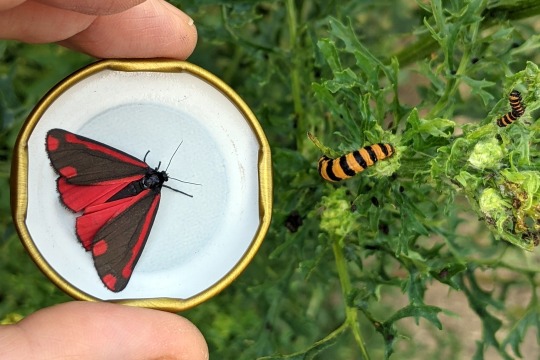

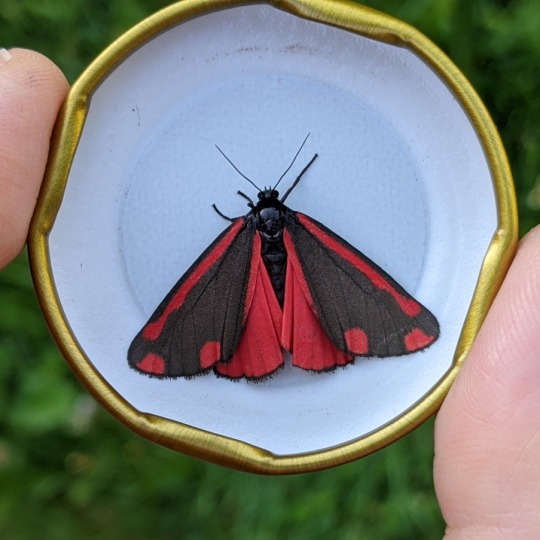
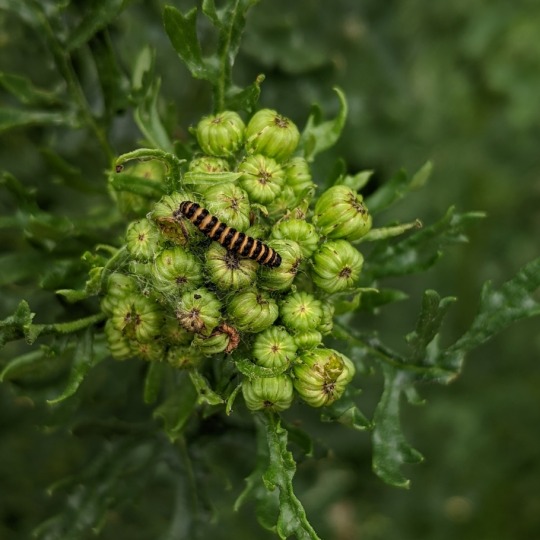




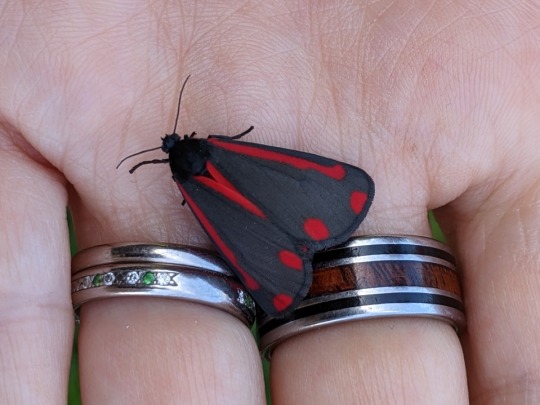
Cinnabar moths and their famously toxic caterpillars are the reason I let a small amount of ragwort grow in my back garden every year. It's a prolific self-seeking weed so it needs a bit of, uhhh... Management, to keep it from taking over the place (and infuriating my neighbours - we have side to side and back to back gardens, in classic UK urban rows.) But it's worth it to get 2 generations a year of these striking moths and stripey blorbs!
The caterpillars absorb the toxins in ragwort and wear aposematic bold colours to warn birds that they taste poisonously bad. They're also covered in stinging hairs - never touch them. Truly. N E V E R. I accidentally brushed past one while taking a pic a couple of years ago. The stings felt like nettles but x100 more so, and took weeks to fully disappear. [EDIT: just heard that cinnabar caterpillar hairs aren't stinging but that some people have skin reactions to caterpillar hairs. So the cinnabar 'stings' could actually be contact dermatitis - worth bearing in mind before you hug catepillars I guess?]
They pass their toxins on when they metamorphose, so the moth is also toxic with DGAF colouration. They're day-flying too - I guess if you're that toxic, you're not worried about being eaten by daytime birds.
Because they're bivoltine (have 2 generations a year) it's common to see cats and adults at the same time, and different generations of caterpillars on the same plant - as you can see in the 1st 2 pics.
Find more info on cinnabars and their relationship with ragwort here
#life goal to be so toxic IDGAF#toxic but fabulous#motivational moth#moth#lepidoptera#insect#moths#insects#nature#bugblr#cool bugs#pretty bugs#cute bugs#bug#bugs#moths matter#teammoth#team moth#garden wildlife#wildlife#cinnabar#entomology#pretty moth#cute moth#moths are cute
396 notes
·
View notes
Text
52 herbs/plants for the @2024-grimoire-challenge
including: some of my favourites, some local plants, and some i know are in my cabinet
bay
echinacea
crape myrtle
sorrel
nettle/deadnettle
sunflower
lemongrass
mullein
mugwort
star anise
olive leaf
hibiscus petals
hawthorn berry
st. john's wort
dandelion root
eucalyptus
calamus root
anise seed
angelica root
hyssop
orange peel
cedar
calendula
lemon peel
jasmine
chamomile
rosemary
thyme
sumac
basil
sesame
garlic
oak
dogwood
magnolia
juniper
sage
dandelion
willow
ginger
cinnamon
maple
clove
ragwort
salvia
hackberry
rose
violet
ironweed
cattails
sweetgum
lemon balm
what i'll be looking for while researching/how i'll be structuring my research entries under the cut
name of plant: scientific and most common names
location: current locale, origin, climate it prefers, invasive status
identifying characteristics: leaves, flowers, stem, smell, colour, all that
method of acquisition: how easy is it to get/where to get it
use: medical, agricultural, industrial, culinary, cultural, magical
personal notes: my experiences with this plant + any salient UPG
image: best artistic rendition i can manage
65 notes
·
View notes
Text
Terms derived from wort
adder's wort (Bistorta officinalis)
adderwort (Bistorta officinalis)
asterwort (Asteraceae spp.)
awlwort (Subularia aquatica)
banewort
barrenwort (Epimedium alpinum)
bearwort (Meum athamanticum)
bellwort
birthwort
bishop's-wort (Stachys officinalis)
bitterwort
bladderwort
blawort
bloodwort
blue throatwort
blushwort
bogwort
boragewort
bridewort
brimstonewort
brotherwort
brownwort
bruisewort
bugwort
bullwort
burstwort
butterwort
cancerwort (Kickxia spp.)
catwort
clown's ringwort
colewort
common ragwort
coralwort
crosswort
damewort
danewort
dragonwort
dragon's wort
dropwort*
dungwort
earwort*
ebony spleenwort (Asplenium platyneuron)
elderwort
European pillwort
fanwort
felonwort
feltwort
felwort
24 notes
·
View notes
Note
tried to translate some Clangen names:
Minkthroat - Nheemleh
i couldn't find something for throat on the lexicon so I went for tongue because I though that fit as well.
Boragenut - Couldn't find one for borage, but nekboq worked for nut, so maybe uhssa for bush might have the same effect - so uhssanekboq for her
Voidpatch - not sure what to do with him, so I went for Hhoelkonpen
Curlystar - Fofwarrlshai
Owlspeckle - Huowoowoo (i love this one so much)
Asternettle - Luoobpokal (I couldn't find a translation for Aster, so I chose Luoob because I like both the names)
Briarears - Pik'kaira
Ramblingpatch - Abababkonpen
Fallenheart - Fewlbabi
Huowoowoo takes the cake, I also gotta shout out Pik'kaira. That one's also fun to say! Pik'ka Ira!
Let's get you some new words-- and start with ASTER, because it's going to be a bit quirky! Old World Asters (of the genus aster) have issues growing this far north.
But they do have a ton of plants in the asteraceae family. IN FACT, dandelions are one of them! Feverfew, chamomile, thistles, daisies, salsify, cornflower, heliotrope, goldenrod... it's a BIG family.
Asters
So, here's a few interesting asteraceae that would make cool symbolic names, and you can translate any of these as simply "aster" in a name. Clan cats don't have cladistics after all, lmao
Common Fleabane (Pulicaria dysenterica) = Skfom
(From Itch + Again = Contraction.)
In humans, you can see right there in the scientific name that it was historically used as a treatment for dysentery, and in the common name that it repels fleas. In cats, it's a skin irritant and a poison.
A desperate cat in the midst of a flea infestation will resort to this to treat themselves, if the Cleric's overwhelmed. Its name is a comment on its cruelty-- it will relieve you temporarily, but you'll get a second itch later.
Has another English name; Erigeron, which is applied to all fleabanes.
Ragwort (Jacobaea vulgaris) = Bochol OR Ffyy-en-aminama
(Pigment + Green) OR (Butterfly + 's + Shanty)
An easy source of green dye, but not the BEST source of it due to fading. Known by two names, Clerics tend to prefer Butterfly's Shanty because it evokes an image of the sacred insects dancing around it. Bochol is actually the newer term, appearing sometime in the late Dawn Era alongside advances in dyemaking technology before SkyClan was driven out.
Toxic if eaten, HATED by humans for being an agricultural weed, Clan cats value this plant greatly. It feeds many insects, which then feed other animals, which then feed Clan cats. It's also bright yellow and cheerful.
Sea Aster (Tripolium pannonicum) = Osaash
(Daisy + Salt)
This plant is seen exclusively in salt marsh biomes! Seaside areas that are regularly flooded by saltwater. They're one of the most notable plants encountered by Salt Patrols, and one of the few flowers that can handle salinity. They have a reputation for being hardy, and being a sure sign that you've made it to the ocean.
Throat and Void
Throat's going to be straightforward!
Throat = Au'u
Translates directly. The front of the neck.
But void... it doesn't really make sense they have a philosophical concept of the void, you know? They don't even seem to have a concept of zero. So here's some possibilities;
Nothing = Shmo
Translates pretty directly. Nothing at all. Absence in general.
No Detectable Smell = Mufm
A "smell" often associated with certain things that have crossed through water, or certain mythological figures. Most things have a smell, even if it's faint.
Probably the closest metaphorically to "void," because a thing without a smell creates a noticeable absence. There's probably an (ANCIENT) TigerClan folktale about some tiger warrior sent to catch the Void Beast of No Smell, which serves as a kitten tale to help remember non-scent types of tracking methods.
Silence = Uh'hwa
The absence of sound or words. Not to be confused with Hah'o, which is a SUDDEN, ominous silencing of all the animal song in an area, usually because they've spotted a predator.
39 notes
·
View notes
Text
December 23rd, 2023
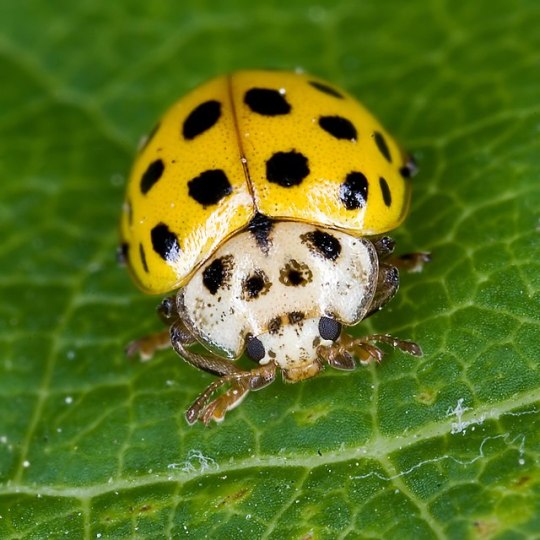

22-Spot Ladybird (Psyllobora vigintiduopunctata)
Distribution: Found in disjointed populations throughout Europe; most common in the northern half of Europe, including the Czech and Slovak Republics, Germany, Belgium, the Netherlands, Scandinavia and the U.K. Has also been reported in the United States, but populations do not seem to have spread significantly.
Habitat: Prefers open habitats, such as forest borders, grasslands, parklands, wastelands and roadsides.
Diet: Fungivore; feeds primarily on the mildews and molds, especially on low-growing shrubs and plants of the Apiaceae family. Commonly found on hogweed, ragwort, creeping thistle, oak and birch.
Description: 22-spot ladybirds are fairly unique among ladybugs due to their fungivorous diet; most ladybugs are carnivorous, feeding on small arthropods like aphids, small spiders, mites and mealy bugs. These insects mainly graze on powdery mildew, a pathogenic fungus that infects plant leaves, causing ailments such as molding and rusts. Though it feeds on a common pathogen, these insects have little use as biological control agents, as they will inoculate new leaves by spreading spores.
A common myth about this insect states that the number of spots it has reflects its age, but this is unfortunately false. The number of spots varies between individuals, but does not vary between years—you'd have a lot of trouble finding a 22-year old ladybug!
Images by Olaf Leillinger (adult) and Gilles San Martin (larva).
17 notes
·
View notes
